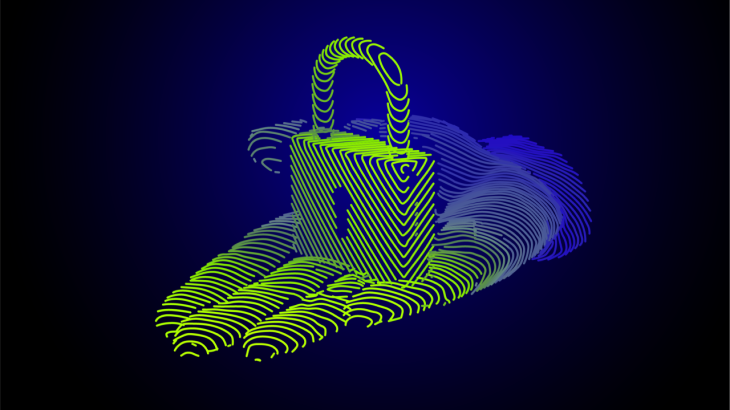
From Hardcoded Passwords to Secure Secrets: How a Leading EMEA Bank Transformed Security with Kron PAM
In the current world of online banking, security isn't just a nice -to-have—it's a must. For one of the largest public banks in the EMEA region, this reality was crystal clear. Handling millions of daily transactions, the bank manages mission-critical systems such as wire transfers, ATM networks, point-of-sale terminals, card processing platforms, mobile banking, and online customer portals. Every one of these systems relies on privileged credentials —passwords, SSH keys, API tokens, and secrets —to connect and function.
But until recently, the bank faced a dangerous and surprisingly common problem: hardcoded credentials hidden in source code and configuration files.
The Challenge: Hardcoded Secrets in Critical Systems
Like many enterprises, the bank had grown its digital infrastructure over decades. They developed in-house applications in .NET, Java, and PHP to support operations such as:
- Logging wire transfer activity into core banking systems
- Processing transactions from mobile and web banking channels
- Synchronizing data across treasury, compliance, and reporting tools
These applications needed access to backend databases and APIs. The fastest way for developers to make that work was to hardcode passwords into config files, scripts, and even source code.
On top of that, the bank was also running RPA robots with UiPath, security scanners with Tenable Security Center and Nessus, and modern CI/CD pipelines with Jenkins and Ansible. Every one of these tools required credentials to connect to systems. Again, the easiest solution at the time was to embed static credentials directly into scripts and jobs.
This practice created enormous risks:
- Exposure risk: Anyone with access to code repositories or config files could extract sensitive passwords.
- Audit failures: Regulators and auditors flagged hardcoded secrets as a compliance violation.
- Operational fragility: Password changes often broke critical services, since credentials were buried in code.
For bank handling billions in transactions, this situation was untenable.
The Solution: Kron PAM Secrets Management
To solve the problem, the bank turned to Kron PAM’s Secrets Management and Application-to-Application Password Management (AAPM) capabilities.
The bank deployed the Kron PAM AAPM Secrets Agent within its infrastructure. This lightweight agent allows applications to fetch credentials from Kron PAM’s Secure Vault without depending on constant network connectivity. Thanks to its caching mechanism, credentials can be retrieved with low latency, even in the event of network disruptions.
For a financial institution where uptime is non-negotiable, this design was critical. Applications could continue processing transactions smoothly, without interruption, while still eliminating hardcoded credentials.
Because the bank’s internal apps were built in a mix of .NET, Java, PHP, and other languages, integration could have been a challenge. But Kron PAM provided native SDKs for .NET, Java, Python, C/C++, and PHP.
Developers were able to quickly integrate SDK calls into their apps, replacing hardcoded database passwords and API keys with dynamic retrieval from Kron PAM’s Vault. The result: no credentials left in codebases, config files, or developer workstations.
Beyond custom apps, the bank had a wide variety of enterprise tools. Kron PAM delivered out-of-the-box plugins for:
- UiPath (for robotic process automation)
- Tenable Nessus and Security Center (for vulnerability scanning)
- OpenText UCMDB (for IT asset management)
- Kubernetes, Jenkins, and Ansible (for CI/CD and DevOps automation)
With these plugins, every robot, script, and automation pipeline was connected to Kron PAM’s Vault. No passwords were hardcoded, no secrets left unmanaged.
Security doesn’t stop at storage. Kron PAM also ensured that every credential was automatically rotated:
- After each use or session checkout
- On a scheduled periodic cycle, even if the credential wasn’t accessed
This constant renewal prevented credentials from becoming static attack vectors, eliminating a key risk that auditors often highlight in financial systems.
The Outcome: Stronger Security, Faster Operations
By adopting Kron PAM’s Secrets Management, the bank achieved several critical outcomes:
- Elimination of hardcoded secrets across thousands of apps, scripts, and automation tools
- Regulatory compliance with audit requirements around privileged account governance
- Improved resilience, thanks to the AAPM Agent’s caching and low-latency design
- Streamlined development and operations, since developers no longer needed to manage or even know application credentials
- Reduced risk of breaches, as passwords and keys were no longer exposed in repositories or logs
For a bank serving millions of customers and processing billions of dollars daily, these improvements were not just about compliance — they were about trust, safety, and reputation.
Conclusion: Secrets Management as a Foundation for Digital Banking
Financial institutions face some of the toughest security and compliance standards in the world. Hardcoded passwords and unmanaged secrets are simply incompatible with this reality.
By partnering with Kron PAM, this leading EMEA bank turned a major vulnerability into a strength. Through seamless integration with custom apps, enterprise tools, and CI/CD pipelines, the bank now manages secrets centrally, rotates them automatically, and delivers them securely on demand.
The result is a secure, efficient, and compliant environment — one where developers, robots, and automation pipelines can keep the bank running without ever handling a password directly.
With Kron PAM, secrets are no longer a liability. They are a managed, protected asset that supports the bank’s digital transformation journey.
Highlights
Other Blogs















